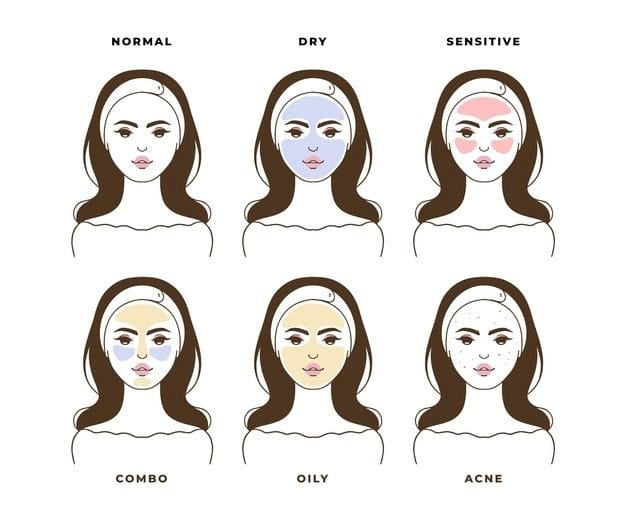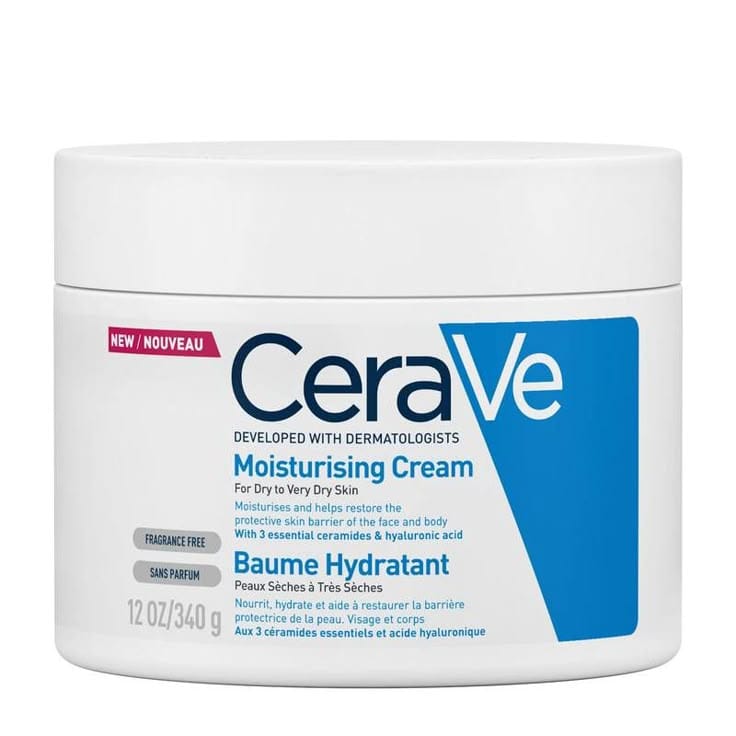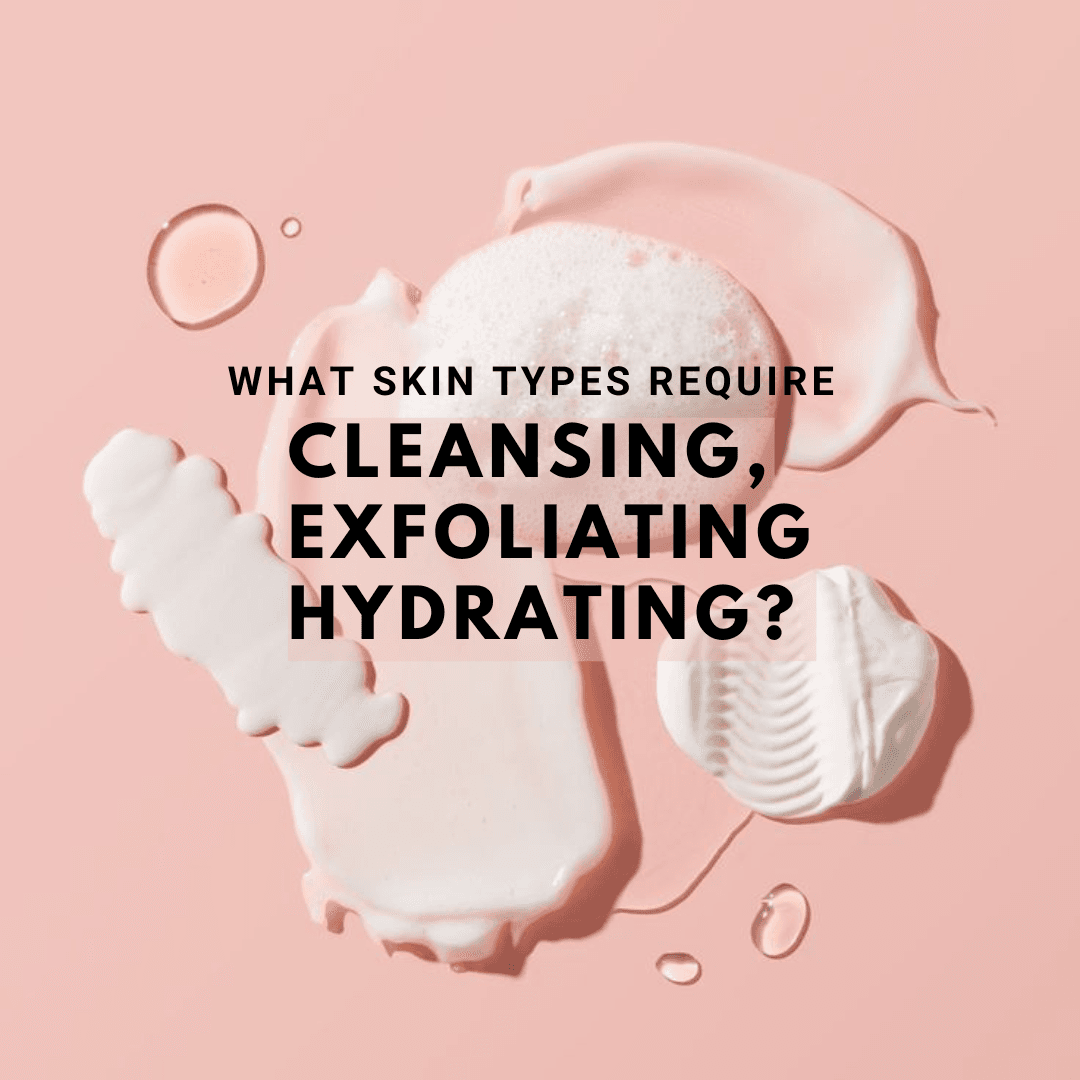Everyone’s skin is different, and that’s what makes it special. Some people have oily skin, others deal with dry skin, and some fall somewhere in between. No matter what your skin type is, it needs the care that suits it best to stay clean, smooth, and healthy.
A good skincare routine doesn’t have to be complicated. It needs to focus on three simple but influential steps: cleansing, exfoliation, and hydration.
These steps help clear away dirt and dead skin cells, keep your pores clogged, and give your skin the moisture it needs to glow.
Your skin faces a lot every day: sun exposure, dirt, and even changes in weather. If you’ve noticed black spots, dry patches, or too much oil on your face, your routine might need a little adjusting.
From boosting hydration to gently removing dead skin, knowing how your skin reacts and what it truly needs is the first step to real results.
In this guide, we’ll explore how each part of your routine, cleansing, using the right exfoliants, and locking in moisture, can be shaped to match the needs of different skin types like sensitive skin, combination skin, or acne-prone skin.
You’ll also learn about helpful ingredients like hyaluronic acid, salicylic acid, and even natural choices like aloe vera and lemon juice.
Let’s break it down and help your skin get the attention it deserves!
Understanding Your Skin Type
Before we jump into skincare routines or try new products, it’s important to understand your skin type. Knowing how your skin reacts to things like cleansers, hydration, and the environment helps you choose what works and what things to avoid that might cause irritation or breakouts.
Here are the most common skin types, and what makes each one different:
Normal Skin: 
If your skin feels balanced, not too oily, not too dry, you likely have normal skin. It usually looks smooth, has small pores, and rarely breaks out. Still, it needs regular cleansing, gentle exfoliation, and good hydration to stay healthy.
Dry Skin:
Dry skin often feels tight or flaky, especially after washing your face. This skin type lacks enough moisture and might show dry patches or dullness. Ingredients like hyaluronic acid or aloe vera can help lock in hydration and strengthen your skin barrier.
Oily Skin:
If your face feels greasy a few hours after washing, you may have oily skin. This happens when your skin makes too much natural oil, which can lead to black spots, shiny areas, or clogged pores. Regular cleansing and using lightweight moisturizers can help balance this skin type.
Combination Skin:
Combination skin is a mix. Your forehead, nose, and chin (called the T-zone) might be oily, while your cheeks stay dry or normal. This skin type needs a routine that helps control excess oil without drying out other areas. A gentle cleanser and targeted hydration usually work best.
Sensitive Skin:
Sensitive skin can feel itchy, stingy, or turn red easily, especially after using new skincare products. It needs extra gentle care and ingredients that calm instead of irritate. Always check for fragrance-free, dermatologist-approved formulas made for sensitive skin.
Acne-Prone Skin:
If you often get pimples, clogged pores, or bumps, you may have acne-prone skin. This type of skin needs careful cleansing, light hydration, and treatment products with ingredients like salicylic acid or glycolic acid to keep your skin clear and calm.
Once you figure out your skin type, you can start choosing skincare products that match your skin’s specific needs. This helps avoid mistakes, improves your results, and supports your skin’s natural glow.
Choosing the Best Cleanser for Your Skin Type
Washing your face might seem simple, but cleansing is one of the most important steps in any skincare routine. It’s what gets rid of dirt, sweat, excess oil, leftover makeup, and anything else that builds up on your skin throughout the day.
Why Cleansing Matters?
Your skin comes in contact with a lot of environmental factors like pollution, bacteria, and even sun exposure that can clog your pores and lead to issues like acne, black spots, or irritation. A cleanser removes all that without stripping away your natural oils or damaging your skin barrier.
Additionally, when your face is clean, it absorbs things like moisturizer, serums, and treatment products much better. This means clearer, smoother, and healthier skin over time.
Picking the Right Cleanser for Your Skin Type:
Not all cleansers are made the same. The best one for you depends on your skin type and how your skin reacts to different ingredients.
Dry skin:
For this skin type, look for creamy or hydrating cleansers with hyaluronic acid or aloe vera. These help lock in moisture and prevent that tight, dry feeling.
Oily skin:
Gel or foam cleansers work best for oily skin. They remove excess oil and help unclog pores without being too harsh on skin.
Combination skin:
Try a mild facial soap or gentle cleanser that balances oil and hydration in different areas of your face.
Sensitive skin:
Use fragrance-free cleansers made with calming ingredients. Avoid harsh chemicals that can irritate.
Acne-prone skin:
Choose cleansers with salicylic acid or glycolic acid. These chemical exfoliants help clean deep inside your pores and reduce breakouts.
Pro Tip: If unsure, ask a board-certified dermatologist or look for products labeled for your skin type. Always patch-test new products to make sure your skin doesn’t react badly.
How to Cleanse the Right Way?
Even the best cleanser needs the right technique:
- First, wash your hands, as no one wants to rub extra germs into their face.
- Second, wet your face with lukewarm water (not too hot, not too cold).
- Now, apply a small amount of product and gently massage it into your skin using your fingertips.
- Focus on areas like your forehead, nose, and chin because these collect the most oil and dirt.
- Finally, rinse well and gently pat dry with a clean towel.
Also, try to cleanse twice a day, once in the morning to freshen up and once at night to wash away the day. But if your skin feels irritated or tight, it’s okay to just cleanse once and splash with water in the morning.
Exfoliation Done Right
Exfoliation sounds fancy, but it simply means getting rid of old, dry, or dead skin cells that sit on the surface of your skin. These leftover cells can clog your pores, make your face look dull, and stop your other skincare products from working properly. When done the correct way, exfoliation reveals smoother, brighter, and healthier-looking skin.
Why Exfoliating Is Important? 
Every day, your skin sheds dead skin cells to make room for fresh ones. But sometimes, those dead cells don’t fall off on their own and that’s where exfoliants come in. They prevent black spots and keep your skin barrier looking fresh and strong.
Regular exfoliation also improves your skin health, especially for people with acne-prone skin, oily skin, or mature skin, where buildup can be more obvious.
Physical vs. Chemical Exfoliants:
There are two main types of exfoliants: physical exfoliants and chemical exfoliants. Both do the job, but each works differently and is better suited for certain skin types.
Physical exfoliants:
These have tiny grains or beads that you rub on your face to remove dead skin. While they work fast, they can be harsh if your skin is sensitive or easily irritated. Always choose gentle options, no sharp or rough scrubs!
Chemical exfoliants:
These exfoliants use safe acids like salicylic acid, glycolic acid, or hydroxy acids to melt away dead cells. They go deeper into the pores and are great for treating acne, spots, or uneven texture. Don’t worry, these acids sound strong, but when used correctly, they’re super helpful and safe.
How to Exfoliate Based on Your Skin Type?
Knowing your skin type helps you choose the right kind of exfoliation:
Dry skin:
Use mild chemical exfoliants once or twice a week. Look for ones with hyaluronic acid to boost hydration and soothe dry patches.
Oily skin:
You can handle stronger exfoliants like salicylic acid, which helps clear clogged pores and reduces excess oil.
Combination skin:
Create balance and use a gentle scrub on oily areas and a mild acid-based product on drier zones.
Sensitive skin:
Go slow and pick extra gentle exfoliants, look for labels that say “for sensitive skin”. Always patch-test before using anything new.
Normal skin:
Most types of exfoliation work, but don’t overdo it. Keep it simple and use what feels right for your skin.
And if you’re ever unsure, a board-certified dermatologist can guide you to the best option.
How Often Should You Exfoliate?
- Over-exfoliating can cause irritation, redness, and even harm your skin barrier. That’s why it is important to exfoliate based on your skin’s need, not a fixed schedule.
- Most skin types require exfoliation 1–2 times a week.
- Oily or acne-prone skin might need it more often (up to 3 times weekly), but always follow up with moisturizer to keep your skin calm.
- Exfoliation once a week or even every other week can be just right for sensitive skin.
Post-Exfoliation Care:
After exfoliating, your skin might feel smoother but also more delicate. That’s when it’s extra important to use a good moisturizer and protect your skin from sun exposure. A daily sunscreen with SPF (sun protection factor) keeps your fresh, new skin safe and glowing.
Done right, exfoliation can truly change the way your skin looks and feels. It helps bring out a healthy glow, smooth texture, and clearer complexion.
Hydration That Lasts
Once your skin is clean and exfoliated, it’s time to give it what it truly needs: hydration! This step is essential for a healthy-looking complexion, no matter your skin type.
Moisturizing your skin helps keep it soft, smooth, and gently shielded from things like sunlight, wind, and pollution. Without enough moisture, your skin barrier can weaken, making it more likely to form dry patches, feel sensitive, or experience breakouts.
Hydration doesn’t always mean drinking water; it also means using the right skincare products that add and lock in moisture from the outside. This is the perfect time to let a moisturizer do its job.
Look for elements like hyaluronic acid, which pulls water into your skin cells, and aloe vera, which soothes and hydrates naturally.
Finding Your Moisture Match:
Dry Skin: 
Thick creams or balms with ingredients like shea butter, ceramides, or hyaluronic acid lock in moisture and keep the skin barrier strong.
Oily Skin:
Lightweight, water-based gel creams with niacinamide or green tea hydrate without clogging pores or adding extra shine.
Combination Skin:
Oil-free or gel-based moisturizers work well for hydrating dry areas while controlling oil in the T-zone.
Sensitive Skin:
Use fragrance-free, alcohol-free moisturizers with calming ingredients like aloe vera, oat extract, or centella asiatica.
Acne-Prone Skin:
Non-comedogenic moisturizers with salicylic acid, aloe vera, or green tea help calm and hydrate without triggering breakouts.
It is also helpful to apply your moisturizer when your face is still slightly damp because this helps seal in the water for deeper and longer-lasting hydration.
Tip: And don’t forget your lips, too! A simple lip balm can keep them soft and protect them from cracking.
Quick Care Recap for Every Skin Type
Cleansing
Use a gentle cleanser that suits your skin type. Avoid harsh soaps that can strip natural oils and upset your skin barrier.
Exfoliation
Pick the right exfoliant: chemical exfoliants like salicylic acid for acne-prone skin, or physical exfoliants for normal skin (but only if mild).
Hydration
Lock in moisture with a hydrating moisturizer. Look for ingredients like hyaluronic acid or aloe vera, and adjust based on how your skin reacts throughout the day.
Your Skin Your Rules:
When it comes to skincare, the most important rule is: there are no rules. Everyone’s skin is made differently, and what works wonders for one person might not be the best for another.
Don’t be afraid to experiment and see what your skin loves. Start with a basic routine that includes skin cleansers and exfoliants, then modify it based on how your skin reacts. This personal method is the best way to find out what truly works for you.
It’s all about knowing how your skin responds to different ingredients like facial soap, chemical exfoliation, or sunscreen with SPF to get the best results.
Ingredient Watchlist:
Having the know-how of what goes into your skincare products can make all the difference. Here’s a modest guide to the ingredients that are your skin’s best friends, and the ones you may want to watch out for:
For Dry Skin:
Look for hyaluronic acid and glycerin to help lock in moisture and keep your skin hydrated. These are great ingredients that maintain the skin barrier and protect against moisture loss.
For Oily Skin:
Seek out salicylic acid and niacinamide, as these both help balance oil production and clear pores. They are often found in chemical peels and skin cleansers formulated to combat excess oil and clogged pores (comedones).
For Sensitive Skin:
Stay away from strong fragrances and look for aloe vera or chamomile to soothe and calm irritation.
For Acne-Prone Skin:
Use ingredients like benzoyl peroxide or tea tree oil to target breakouts and prevent future ones.
Ingredients to avoid:
Harsh chemicals like sodium lauryl sulfate (SLS) can be drying, especially for sensitive or dry skin. Be sure to check the ingredient list on skin cleansers or facial soaps to avoid this irritant.
Fragrances can irritate sensitive skin types.
Sticking to ingredients that match your skin type can help avoid irritation, redness, or breakouts.
Norman Orentreich: A Dermatology Pioneer
Norman Orentreich is famous for his work in hair restoration, but he also helped shape modern skincare. He focused on how skin reacts to things like the environment, aging, and genetics, helping create personalized skincare routines.
His research on skin cleansers, chemical exfoliation, and treating skin problems still influences dermatologists today. Orentreich’s work shows us how important it is to adjust skincare to match different skin types, whether it’s for acne-prone skin, hydration, or sun protection.
FAQs
What is my skin type, and how does it affect my skincare routine?
Knowing your skin type (dry, oily, combination, or sensitive) helps you choose the right skincare products for your skin’s health.
How often should I exfoliate my skin?
Exfoliate 1-3 times a week, depending on your skin type. For example, chemical exfoliants like salicylic acid work well for oily skin, while physical exfoliants may be gentler on sensitive skin.
What are the benefits of using a cleanser for my skin?
A good cleanser removes dirt, excess oil, and impurities, helping prevent clogged pores and promoting clearer skin. Choose a gentle facial soap or skin cleanser suitable for your skin’s needs.
Should I use sunscreen every day?
Yes! Sunscreen with a high sun protection factor (SPF) protects your skin from harmful UV rays, preventing sun exposure damage like black spots, premature aging, and irritation.
How do I choose the right moisturizer for my skin type?
Pick a moisturizer that suits your skin type: lightweight for oily skin, hydrating for dry skin, and soothing for sensitive skin. Make sure it provides hydration and supports your skin barrier.
What skincare ingredients should I look for based on my skin type?
For dry skin, look for ingredients like hyaluronic acid to lock in moisture. Salicylic acid helps control oil in oily skin, while aloe vera is great for sensitive skin.
Can I use lemon juice as a natural skincare treatment?
Lemon juice can act as a natural exfoliant, but it may irritate some. Always patch-test and dilute it before applying to your skin.
Wind Up:
Taking care of your skin doesn’t have to be difficult. Whether you have dry, oily, sensitive, or acne-prone skin, focusing on the basics like cleansing, exfoliating, and hydrating is the key to keeping your skin healthy and glowing. Pay attention to how your skin reacts and adjust your routine to fit its needs.
Remember, skincare products and ingredients are not one-size-fits-all, and what works for someone else may not be right for you.
With the right care and patience, you’ll find what helps your skin look and feel its best.
Are you ready to start your skincare journey? Take our Skin Type Quiz to find the perfect routine for your unique skin needs. Start now and glow like never before!

No responses yet